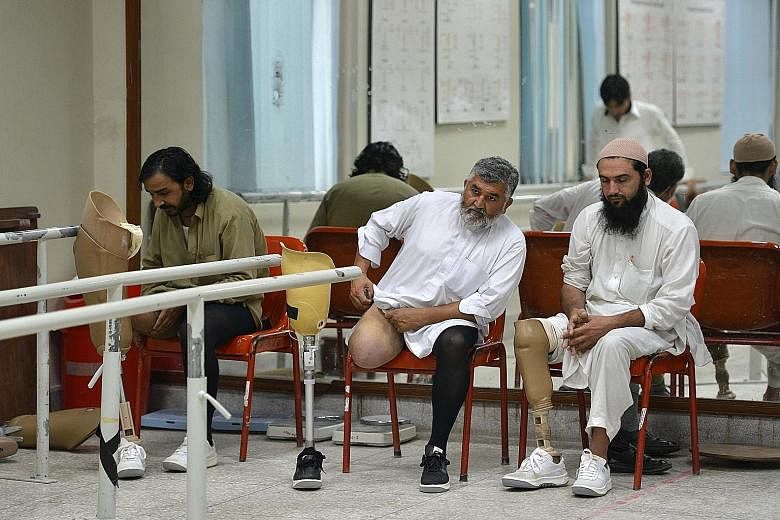PESHAWAR (Pakistan) • Pakistani teen Ali Shah was on his way to school when he lost half of his right hand and his left leg after stepping on an improvised explosive device (IED) - the Taleban's weapon of choice in its decade-long insurgency.
Now the 13-year-old, along with hundreds of others maimed by such bombs every year, is learning to use a prosthetic in a society where the disabled have traditionally been shunned and forced to stay at home.
Nearly a year on, he is set to receive a new leg at the Pakistan Institute of Prosthetic and Orthotic Sciences in Peshawar where thousands have been treated, a lifeline for many in the country with one of the highest IED death rates in the world.
Ali remembers the day he lost his limbs vividly. "I thought something happened to my heart when the blast occurred, I lost my senses, someone took me to the doctor and there I returned to my senses," he said, speaking at the Doctors Without Borders hospital where he is being treated.
It is not clear who was behind the blast that tore into Ali at the school gate as he was coming back from lunch. He was rushed by his father to a field hospital, then taken on an arduous 12-hour journey to Peshawar - by car, van and bus, bleeding all the way - where medics saved his life.
But the road to recovery, which has taken months to allow his wounds to heal enough for the young survivor to be fitted with the prosthetic, has only just begun.
Beyond the physical loss, many patients who lose limbs undergo severe psychological trauma that can lead to irregular behaviour, according to patient liaison officer Zahida Parveen. Sometimes even a new limb is not enough to overcome the long-term mental struggle. "They feel dependent on others. For example, after receiving (prosthetic) appliances, some patients did not try to participate in normal life activities to support themselves," she said.
"There is stigma around disability and a fear of becoming a burden on one's family, especially for young men who are supposed to take responsibility to provide for their family," said Ms Shaista Aziz, a spokesman for Doctors Without Borders, which runs several trauma centres in Pakistan's north-west.
While the use of landmines among armies has fallen globally since the 1990s, the number of civilians hit by IEDs has skyrocketed, according to Action on Armed Violence. The British charity recorded a 70 per cent global rise in civilians killed or maimed in such attacks between 2011 and 2013.
In Pakistan - which has the highest number of IED-related casualties along with Iraq and Afghanistan - Taleban and other Islamist groups have used improvised devices and firearms to kill more than 27,000 civilians and security forces since 2004, according to the South Asia Terrorism Portal monitoring group.
AGENCE FRANCE-PRESSE

